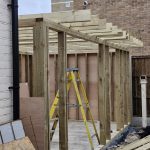The Atlas of London’s Homelessness Services is an interactive website allowing you to view data at a pan-London, borough or multi-borough level. Delivered by London Housing Foundation in partnership with Homeless Link, it provides a unique overview of the volume and composition of homelessness services in London for people with experience of or at risk of sleeping rough. In its first year after launch it had over had over 2,500 unique visitors and on average has been used over 200 times each month.
But how does it work? How did the designers manage to build it to create the interactivity we needed combined with the ease of use?

Tom Shirley is the Founder of Illustrating Impact (https://www.illustratingimpact.com/) and worked with the teams at LHF and Homeless Link to develop the Atlas. He explains recent changes.
“The decision was recently taken to move the LHF Atlas on to a new technical framework. Previously the tool was built using Tableau Public software. Tableau allows complex views, such as maps, to be built quickly and elements such as text and colour schemes can be changed instantly.
This was ideal as in the early stages of the Atlas project we were working on multiple design ideas and wanted to ensure the tool was useful before investing in a longer term solution. By using Tableau we could test these with users and develop changes quickly.
But as time went on we found that Tableau did have drawbacks. The Atlas has advanced design elements so we were unable to control the loading speed of the Atlas. It had become too slow to meet user’s expectations. Additionally it became quite complex to update the data in a robust way.
So, in consultation with LHF and Homeless Link we decided to move the Atlas across to a D3 based coding platform. Without going into the technical details (but contact me if you’re interested….!) the Atlas now loads instantly in most cases. And the data updates automatically every night if needed. The Atlas now also has much more flexibility in terms of design and transitions. So, overall it has a more modern feel as dropdowns work instantly and the views transition smoothly with animations.
What’s more this new platform gives us exciting opportunities as we look to make the Atlas more useful over the coming years. New technology such as “scrollytelling”, demonstrated nicely here, is all built on D3. So going forward we have more potential ways to communicate issues around homelessness provision in London.




